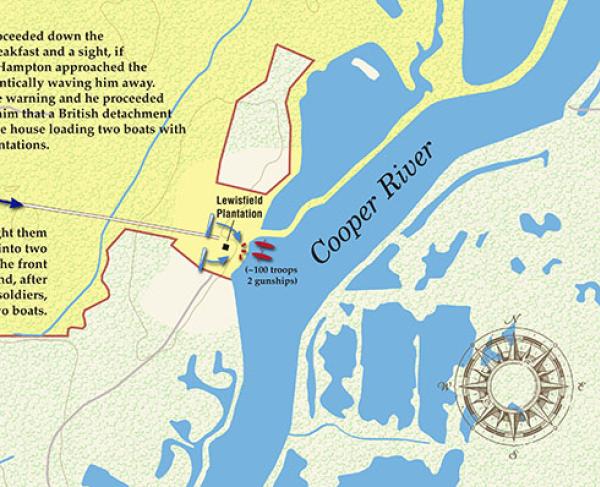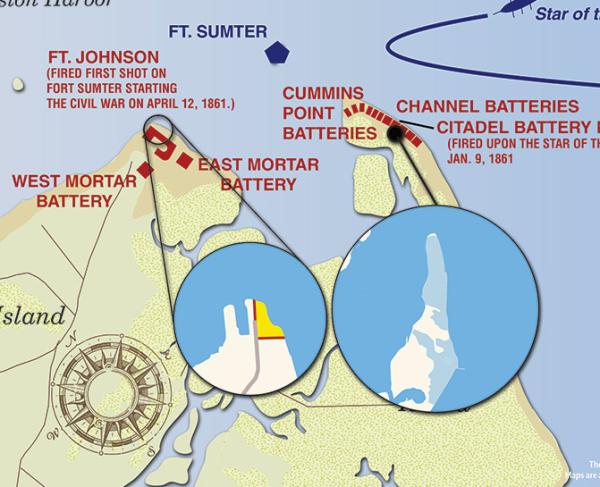Siege of Charleston Harbor | Mar - May 1780
In December 1779, the British Commander-in-Chief in America, General Sir Henry Clinton, left New York City with a fleet of ninety troopships, fourteen warships, and more than 13,500 soldiers and sailors. Sailing for Savannah, Georgia, Clinton planned to rendezvous with a force commanded by Lieutenant Colonel Mark Prevost and march overland to Charleston, South Carolina. Defending the city was a grossly outnumbered American army under the command of General Benjamin Lincoln.
In March 1780, Clinton, Prevost, and General Charles Lord Cornwallis, whose force had accompanied Clinton from New York, descended on Charleston. By early April, the combined British forces had successfully trapped the Americans in the beleaguered city.
To make matters worse for the defenders, British warships successfully ran past Fort Moultrie at the mouth of Charleston Harbor, further isolating Lincoln’s position by effectively closing off any means of escape or reinforcement. The noose only grew tighter as more British forces converged on the Charleston area and began to bombard the Americans’ hastily prepared defensive works.
On April 21, hoping to preserve his army, Lincoln offered to surrender the city if his men were allowed to leave unharmed. Clinton refused to accept these terms and quickly resumed his artillery bombardment.
Over the next two weeks, the British moved closer and closer to the American lines. By May 8, only a few yards separated the armies. Clinton demanded that Lincoln surrender unconditionally. The American general refused, so Clinton ordered the city bombarded with heated shot. As Charleston burned, Lincoln had no choice but to accept the inevitable.
The siege of Charleston finally came to a close on May 12, 1780. With General Lincoln’s surrender, an entire American army of roughly 5,000 men ceased to exist.
Related Battles
5,506
258



